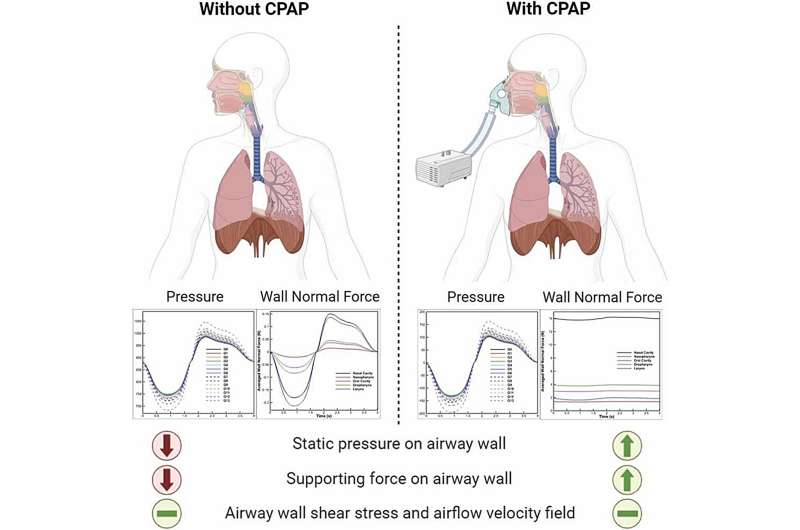
Using a computational model representing the full respiratory tract, researchers from the University of Technology Sydney (UTS) have confirmed the safety of CPAP therapy, addressing concerns about potential damage to lung tissues due to high pressure or turbulent airflow.
“CPAP works by increasing airway pressure to prevent the collapse of soft tissues during sleep that results in snoring and more seriously, interrupted breathing and daytime fatigue,” said lead researcher for the study Senior Lecturer of Mechanical Engineering Dr. Suvash Saha.
“If not treated, it can lead to serious health problems like high blood pressure and heart disease.
“Unlike previous studies that have focused primarily on the nasal cavity or specific sections of the respiratory system, our study has used advanced computational fluid dynamics to understand how CPAP therapy affects different parts of the respiratory system, from the nose down to the smallest airways in the lungs.”
Dr. Saha said the results provide reassurance that CPAP therapy, while increasing airway pressure to prevent blockage during sleep, does not adversely affect airflow velocity or cause harmful levels of shear stress on lung tissues.
“Our study helps dispel doubts about the safety of CPAP therapy by systematically analyzing various parameters like airway pressure, airflow velocity, and shear stress,” Dr. Saha said. “This contributes to a better understanding of how CPAP supports the airway without causing additional strain or damage.
“Knowing the detailed impacts of CPAP therapy provides insights that could help optimize treatment strategies for obstructive sleep apnea, something that is particularly valuable for medical practitioners looking to balance the benefits of airway stability provided by CPAP with the comfort and safety of their patients.
“Interestingly research is now supporting the use of CPAP as a simple and safe approach to improving lung growth and breathing for premature infants and our results may also support that application of the technology.”
The results of the study have been published in the article “Airway stability in sleep apnea: Assessing continuous positive airway pressure efficiency,” by Suvash C. Saha, Xinlei Huang, Isabella Francis and Goutam Saha, in the journal Respiratory Physiology & Neurobiology.
More information:
Suvash C. Saha et al, Airway stability in sleep apnea: Assessing continuous positive airway pressure efficiency, Respiratory Physiology & Neurobiology (2024). DOI: 10.1016/j.resp.2024.104265
Citation:
Sleep apnea patients can breathe easy about CPAP therapy, computer simulations suggest (2024, May 8)
apnea-patients-easy-cpap-therapy.html
.
. The content is provided for information purposes only.
